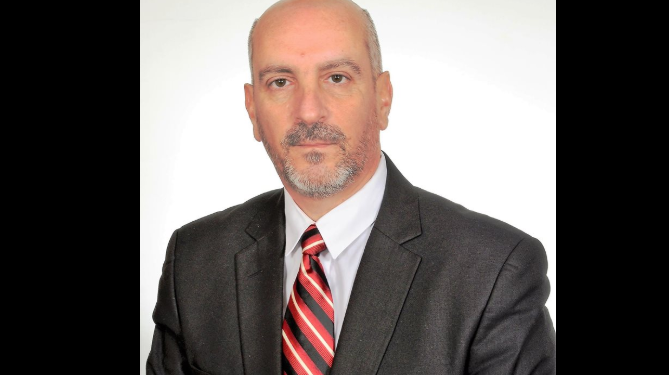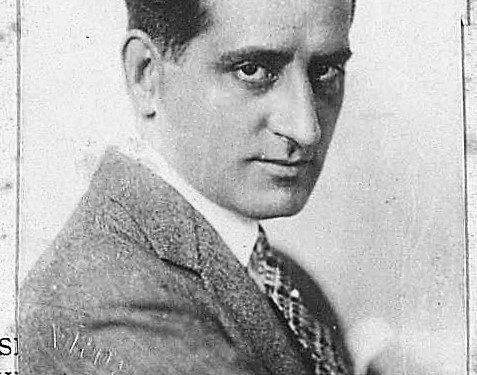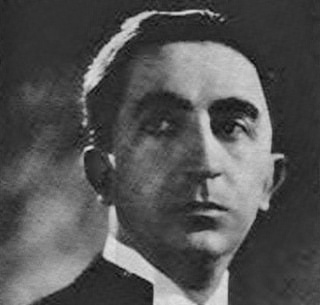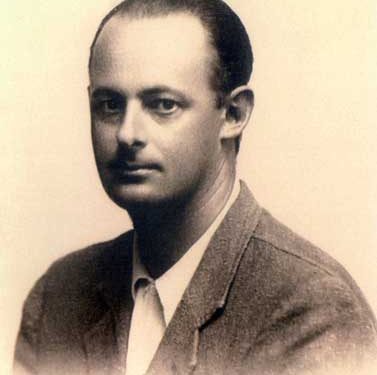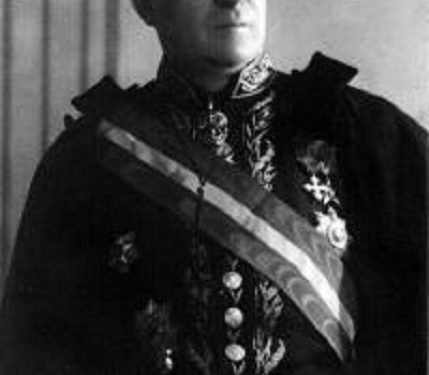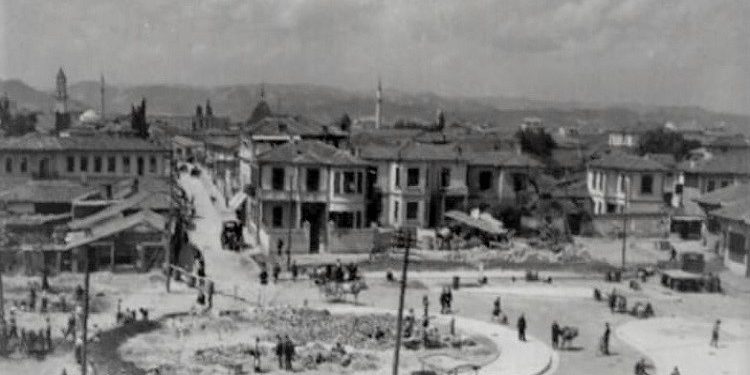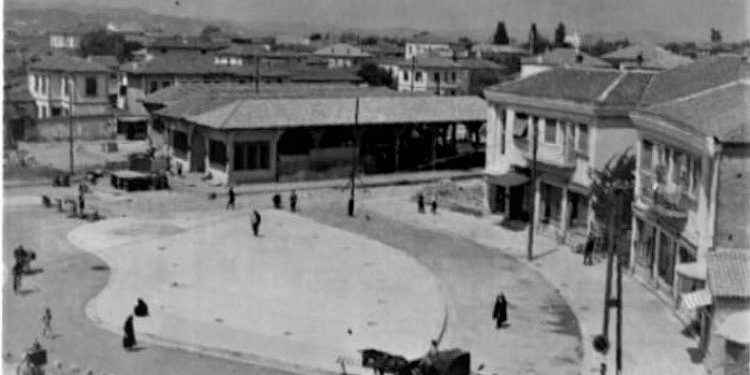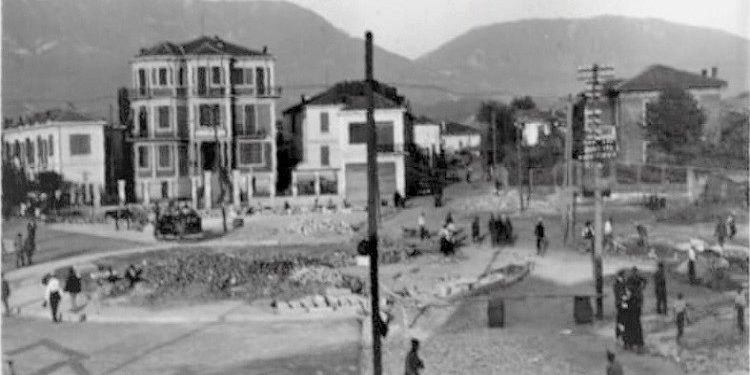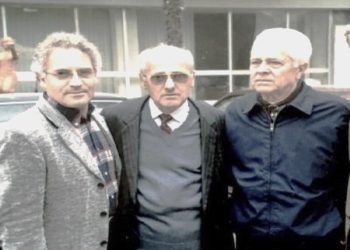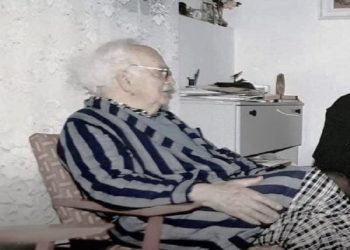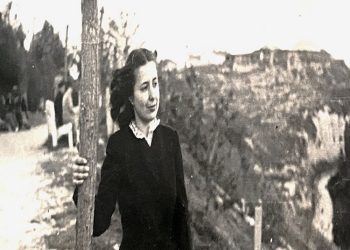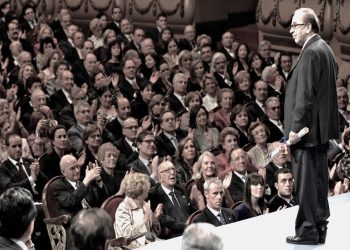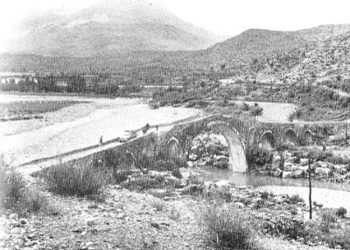By: Dr. Enriko Ceko
Memorie.al / The boulevard of the capital of Albania is relatively new compared to the main streets of the centers of European capitals, but its history is perhaps one of the most dramatic, saddest and most provocative and emotional stories at the same time. It is dramatic and sad because this history is filled with many harrowing events and it is provocative and emotional because it encourages you to search even more among the years and periods, for the truth about it, the truth which is hidden among the years, periods and different historical, political, economic and social times, through which Albania has passed and this has apparently been done on purpose, so that we today do not have knowledge of our past, whatever that past, glorious, painful, sad, poignant, but nevertheless very emotional and almost unreal, being in fact the undeniable truth.
It is already known that the Boulevard of Tirana is associated with the great names of Italian, Albanian and Austrian urban planning, architecture and civil engineering of the first half of the 20th century and beyond. The names of Steimetz, Eshref Frashëri, Castellano, Weiss & Kohler, Armando Brasini, Gerardio Bosio, Florestano Di Fausto, Giulio Berté, Vittorio Ballio Morpurgo, Antonio Maraini, Odhise Paskali, Pietro Porcinai, Gjovalin Gjergji, the Sgaravati Brothers, etc., have been and remain great names of the academic, artistic, urban planning, architectural, engineering and agronomic elite of the time in Italy, Albania, Austria, Belgium, Germany, Greece, Libya, Latin America, Africa, etc.
The first line of the boulevard of the capital of Albania was laid out on paper in 1917 by the Austrian engineer Steinmetz, who came to Albania in 1916, together with 1,000 Austrian soldiers in the midst of World War I. He built, where the Puppet Theater is today, the offices of the Austrian Army Headquarters and the House of Officers of this army, along with the army canteen.
Tirana was declared the capital in 1920 and the regulatory plan of the capital, which also included the boulevard outlined by Steinmetz, was taken over by the Albanian Eshref Frashëri, the Italian Castellano and the Austrians Weiss & Kohler, who in 1922 received from Zog I the task of putting the complete regulatory plan of the center of Tirana on paper, a task that they completed around 1925.
Furthermore, during the years 1927 – 1929, within the framework of a loan from the Italian government of that time, the plan for the boulevard was revised by the Italian architect, Armando Brasini and after him, during the period 1929 – 1940, they revised, completed and implemented, together with some of the buildings, which still stand today, the Italian architects, Gherardo Bosio, Florestino di Fausto, Giulio Berté, Vittorio Ballio Morpurgo, the Italian sculptor Antonio Maraini, the Albanian sculptor Odhise Paskali, the Albanian engineer Gjovalin Gjadri and the Italian agronomist, Pietro Porciani and the Sgaravati Brothers, etc.
It was Armando Brasini who gave the boulevard the magnificent style according to the line of the European Renaissance, in the form of a magnificent project. It was Gherardio Bosio who gave the boulevard the European splendor and the buildings with a neoclassical utilitarian sense, with a project in which Mussolini himself was interested, who summoned both Brasini and Bosio to two special audiences, to report on the progress of the Tirana Boulevard project.
It was Florestino Di Fausto who gave us a monumental neo-Renaissance ensemble of unique value in Europe, a special group of buildings of the main departments of the Albanian Government, around the “Skënderbej” Square. It was Giulio Berté who gave us the futuristic buildings of the National Theater and the Experimental Theater, where the “Skënderbej” Youth Organization and the Institute of Albanological Studies also began to develop their activity.
It was Vittorio Ballio Morpurgo who gave us the magnificent building of the Bank of Albania, considered in a competition in the 1970s, as one of the safest buildings in the world. It was Pietro Porcinai who gave the green to the main street of the capital together with the Sgaravati Brothers. Pietro Porcinai was one of the best specialists in Italian and world horticulture of his time, graduated in agronomy at the Sapienza University and who took the greening of the main street of the capital of Albania as his first task.
With this magnificent work, Pietro Porcinai has entered the world elite of horticultural architecture. He has carried out magnificent projects in Germany, Belgium, etc., but the project for the greening of the center of Tirana and the boulevard. Is his first work with an international character? He has left behind more than 1000 works all over the world, but all of these begin with Tirana. Specifically, the flowerbed in front of the ministries, the garden and greenery in the Royal Palace (Brigade Palace), etc., are a source of pride for his name and for Tirana. Even today, implementers of gardens and green spaces in many countries of the world refer to the experience and school of greenery of Porcinai, who has left behind many professional publications in this field.
Porcinai’s work in Albania was supported by the Sgaravati Brothers, whose grandfathers had founded a company in Italy many years ago for gardens and greenery. They are the producers of plants, shrubs and trees that were planted in Tirana at that time. Even today this company exists and is among the most successful in the world in this field.
Along the boulevard, but mainly in the garden between the ministries and in the premises of the former Hotel “Dajti” there were some very special trees, which went very well with the climate of Tirana. These were trees suggested to be planted as seedlings in Tirana by Porcinai and which were planted by the Sgaravati brothers. These trees in technical language are called “cedrus libani”, Lebanese cedar. With this tree, Solomon built the Temple of Jerusalem, according to the legend found in both the Bible and the Quran, and also Jesus Christ, according to the Christian faith, or Isaiah, according to the Mohammedan faith, called this tree a symbol of justice.
Now it seems that since in official Tirana there is no one who thinks about justice, there is no place for the tree of justice. These trees have been uprooted from the boulevard and it is not known where they ended up and the two mayors of Tirana, Edi Rama and Erion Veliaj, are responsible for this. The only bridge on the boulevard was designed in 1932 and built in 1934-1935 by the Albanian engineer, academician Gjovalin Gjadri, who designed and implemented many projects at that time, among which we mention the arch bridge over the Mat River.
For the first time, the boulevard was named “Zogu I” Boulevard, and then it was called “Viale del Impero” (Avenue of the Empire), then it was called “Mussolini Boulevard” and then it was divided into two parts, which were called “Martyrs of the Nation Boulevard” and “Stalin Boulevard”. Later, in the years of the regime change, we have the “Martyrs of the Nation” Boulevard from “Skënderbej” Square to the University Of Tirana Building and the “Zogu I” Boulevard from “Skënderbej” Square to the former Train Station.
The entire boulevard in its original version was initially designed for a distance of about 4,100 meters, also using part of the hilly area where the artificial lake is. So there was an elevation to show the greatness of the Albanian nation. The project was further shortened, to 2,100 meters and beyond, dividing the boulevard into two parts, the “Martyrs of the Nation” Boulevard, which is about 1,300 meters long from “Mother Teresa” Square to “Skënderbej” Square, and the other part from “Skënderbej” Square to the end of “Zogu I” Boulevard, which is about 600 meters, so a total of about 1,900 meters. Along the southern part of the boulevard, there are also the most important buildings of the Albanian public administration. This boulevard, one of the most important streets in the country, has been destroyed several times.
The first destruction of the Boulevard was in January 1945, when the then regime decided to change the axis of the boulevard, from “Skënderbej Square” to the former Train Station, to divert it by a little more than a meter to the east, as if to show the course that Albania would take during the communist regime. Even the naming of this part of the boulevard after the dictator “Stalin”, at that time, best shows the course that official Albania would follow at that time. Even today, this part of the boulevard is narrower than the part from the Central Corps of the University to “Skënderbej Square”. This diversion is unique in the world of construction, architecture and urban planning. No boulevard in any city in the world has a deviated axis.
The second destruction of the boulevard, continuously from 1945 onwards, came from the change in the architecture of the center of Tirana, compared to the project of Florstino di Fausto. Fausto had planned that in the center of Tirana, there would be ten buildings, where together with the five ministries, the municipality and the building of the former Party Committee, which was destroyed in the 80s, there would be three other buildings, such as the State Police, the National Post and the Parliament, which had the same style as the ministry buildings, and which would be exactly where the National Museum, “Tirana International” and the Palace of Culture are today.
Further along the northern part of the boulevard, there would be other government buildings, just like the ministry buildings and at the end there would be an identical building, like the Central University Building, where it is said that Armando Brasini had planned to house the offices of the high judicial administration. In fact, it would be in honor of the governments of Albania, to follow the project in question, to give us Albanians a dignified boulevard like Paris, Berlin, Rome, etc. have today.
The third destruction of the boulevard was in November 1974, because the dictator of that time, to show military strength, decided to bring T-72 tanks to the boulevard, which destroyed almost all the briquette plates with which the boulevard was covered. The entire boulevard was repaired and this became a routine every five years, whenever there were parades for the Liberation Day and the 1st of May, which was a very costly thing for the country’s economy.
The fourth destruction of the boulevard is its “reconstruction” in 2005, along which the entire boulevard from the Central University Building to “Skënderbej Square” was concreted, 1,700 meters long and 31.5 meters wide. A material was placed on the concrete, which in technical terms is called a soft bed, with pumice sand (quartz sand), but there is evidence that unwashed river sand was also used, which also has clay fractions. In fact, this technique is good for sidewalks and not for car roads. This is because it has a negative impact on the sliding of cars and because of the materials with which it was reconstructed, it also brings about the release of toxic materials, such as Si O2 (silicon dioxide), which is one of the causes of the incurable lung disease silicosis.
The fifth destruction of the boulevard was in 2008, when the mayor of the time, Edi Rama, “reconstructed” the part of the boulevard from “Skënderbej Square” to the former Train Station, a project for which around 8 million euros were spent, for which Rama declared that this part of the boulevard did not need reconstruction for another eighty years, but this was not possible, after Erion Veliaj ruined the plans, with the sixth destruction of the capital’s boulevard.
The sixth destruction of the capital’s boulevard is the current massacre of Erion Veliaj, over the center of the capital, which is still ongoing, destroying “Skënderbej Square”, the park between the ministries and the boulevard itself between the ministries, although this part of Tirana has been named a Monumental Ensemble, with a VKM of 2000. Other smaller-scale damages, this Boulevard has also had during various protests organized by political parties, over the last 30 years in the capital.
It is this boulevard that was once filled with citizens who were doing the evening lap and which is now almost empty in the evening. It is this boulevard from where the protests against dictatorial regimes have started and it is this boulevard. That has accompanied dictators to the other world. It is this boulevard and all the buildings designed along with it, including the theater complex, that were built by the hands of the citizens of Tirana and all of Albania, who for a period of about 20 years, in the years 1920 – 1940, contributed together with Austrian, Italian and Albanian constructors, engineers, architects, urban planners, who, with their building skills, gave us this boulevard that we have today and these unique buildings around it, which we still have today.
Now, apparently, the time has come for the boulevard to “take revenge” for all that the dictators have caused it, and apparently it is this same boulevard that, together with the National Theater, as part of the center of the capital of Albania, with unique values at the international level, will show the place that even the last dictator deserves and the one who stands very close to him and who remembers that he will be the continuer of the dictator’s path. Memorie.al




